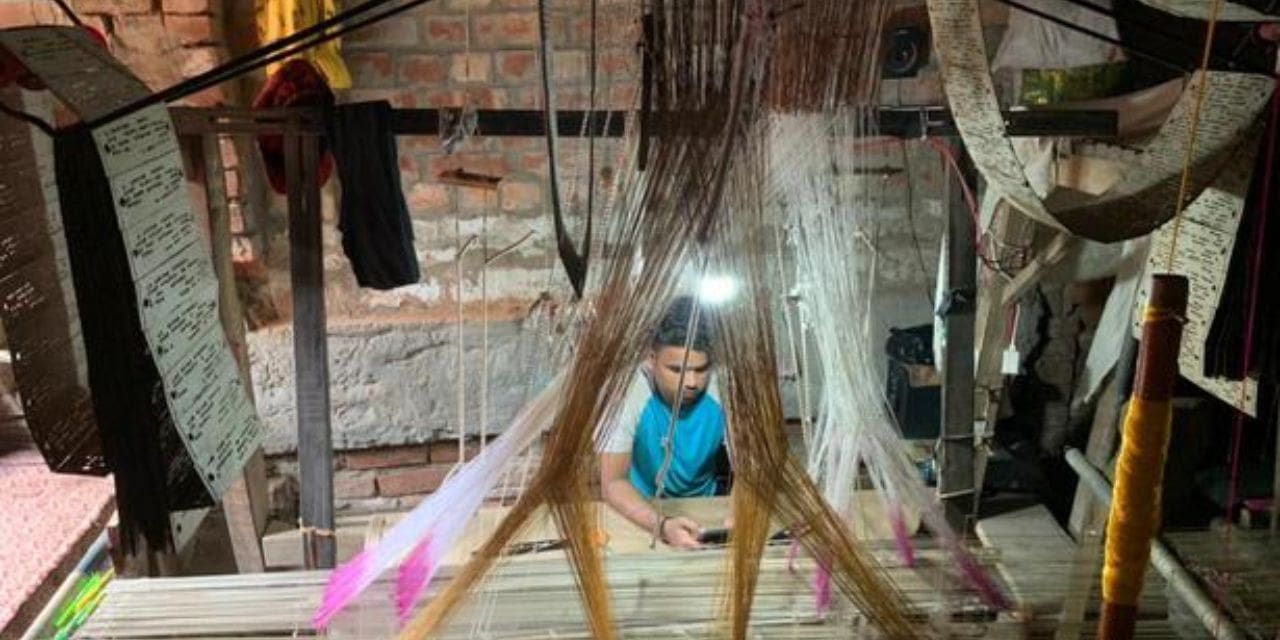Anwar Ali Khan, 55, a resident of the Bazardiha locality in Varanasi, is an expert in the old art of embellishing silk saris with zari using a handloom. But over the last few months, he has been looking to leave the profession he inherited from his forefathers.
“Five years ago, if the cost of making a sari was ₹4,000, we used to sell it for ₹4,500 or even ₹5,000, but now the cost has gone up to ₹6,000 and our customers are not ready to pay for it. I am looking for some other job to make ends meet,” he said.
The fourth and latest All India Handloom Census 2019-20 estimated that 67.1% handloom households earn less than ₹60,000 a year, effectively meaning that if four members in a family are engaged, each artisan earns a measly ₹41 a day. Bazardiha’s weavers are no exception.
Narrow lanes, huts and dwellings with no aesthetic beauty, pucca houses in disrepair – these define the area of Varanasi that is home to more than 1,000 weaver or bunkar families, mostly from the Muslim community.
Mr. Khan’s neighbour, Ikram-ul-Huq, is feeling the pinch too. He struggles to pay the fees for his children in a nearby low-cost private school. Asked what needed to be done to uplift the weaver community, Mr. Huq replied with a sense of frustration, “What can you do? Just go and show the people that we are dying a slow death.”
Govt. policies
The weavers attribute their sharp slide to government policies, especially the roll-out of the Goods and Services Tax (GST), and the disruption wrought by the COVID-19 pandemic, even though the government often reiterates that it’s doing a lot to safeguard their interests.
“Since the implementation of the Goods and Services Tax (GST), we are getting half the work we used to get. Before GST, if any bulk customer of ours had to sell 500 pieces of saris, he would take 600 pieces and pay in cash at times. But now, if the requirement is for 500 pieces, he would place an order for 400 pieces as GST has to be paid. No one wants to take the risk,” said Javeed, who employs seven workers in his handloom unit.
Young men from families involved in zari weaving for generations have migrated to cities like Mumbai, Delhi, Kolkata and Pune to find menial jobs in textile factories. Some have quit the textile sector entirely, others with professional degrees moved to West Asia for a better future.
Many weavers who lack formal education find it an uphill task to enrol in government schemes. The Handloom Department under the Ministry of Textiles has introduced a health insurance scheme, and the Mahatma Gandhi BunkarBimaYojana (MGBBY) for weavers, but only those who have formed cooperatives can benefit. The others have to obtain recognition certificates from the State Directorate of Handloom and Textiles in Lucknow to avail of insurance and health schemes.
But getting the certificate is easier said than done. “We earn ₹10,000-₹12,000 a month and struggle to make ends meet. The paperwork is lengthy and requires travelling three-four times to the [State] capital,” Mr. Khan said.

